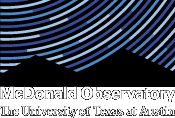Board of Visitors Winter Meeting Shares Astronomy Highlights
The 2025 Board of Visitors Winter Meeting took place February 28 and March 1 on The University of Texas at Austin campus. Over 140 members and guests joined us for a reception at the Texas Science & Natural History Museum, the latest news from UT and BOV leadership, and a showcase of the pioneering work underway at the Department of Astronomy and McDonald Observatory.

